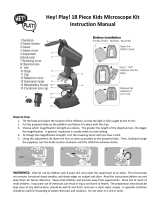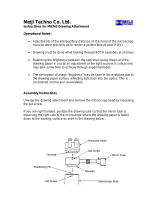
Leica DM 500, DM500 B Manual 11
Information for the person responsible for the instrument
Information for the person responsible for
the instrument
Ϙ Ensure that the Leica DM500 or DM500 B
microscope is used only by qualified person-
nel.
Ϙ Ensure that this user manual is always avail-
able at the Leica DM500 or DM500 B micro-
scope.
Ϙ Carry out regular inspections to make
certain that the authorized users are adher-
ing to safety requirements.
Ϙ When instructing new users, do so thor-
oughly and explain the meanings of the
warning signs and messages.
Ϙ Assign individual responsibilities for start-
ing, operating and servicing the instru-
ment and monitor the observance of these
responsibilities.
Ϙ Do not use the Leica DM500 or DM500 B
microscope unless it is in perfect condition.
Ϙ Inform your Leica representative or Leica
Microsystems (Schweiz) AG, Industry Divi-
sion, 9435 Heerbrugg, Switzerland, imme-
diately of any product defect that could
potentially cause injury or harm.
Ϙ If you use accessories made by third-party
manufacturers with the Leica DM500 or
DM500 B microscope, be sure that each
such manufacturer confirms that the
combination is safe to use and observe the
product's user manual.
Ϙ Modifications and maintenance of the Leica
DM500 or DM500 B microscope may only
be performed by professionals expressly
authorized by Leica.
Ϙ Only original Leica replacement parts may
be used in servicing the product.
Ϙ After service work or technical modifica-
tions, the unit must be reconfigured with
observance to our technical requirements.
Ϙ If the unit is modified or serviced by unau-
thorized persons, is improperly maintained
(as long as maintenance was not carried
out by us), or is handled improperly, Leica
will not accept any liability.
Ϙ The electric installation in the building
must conform to the national standard, e.g.
current-operated ground leakage protec-
tion (fault-current protection) is suggested.





















